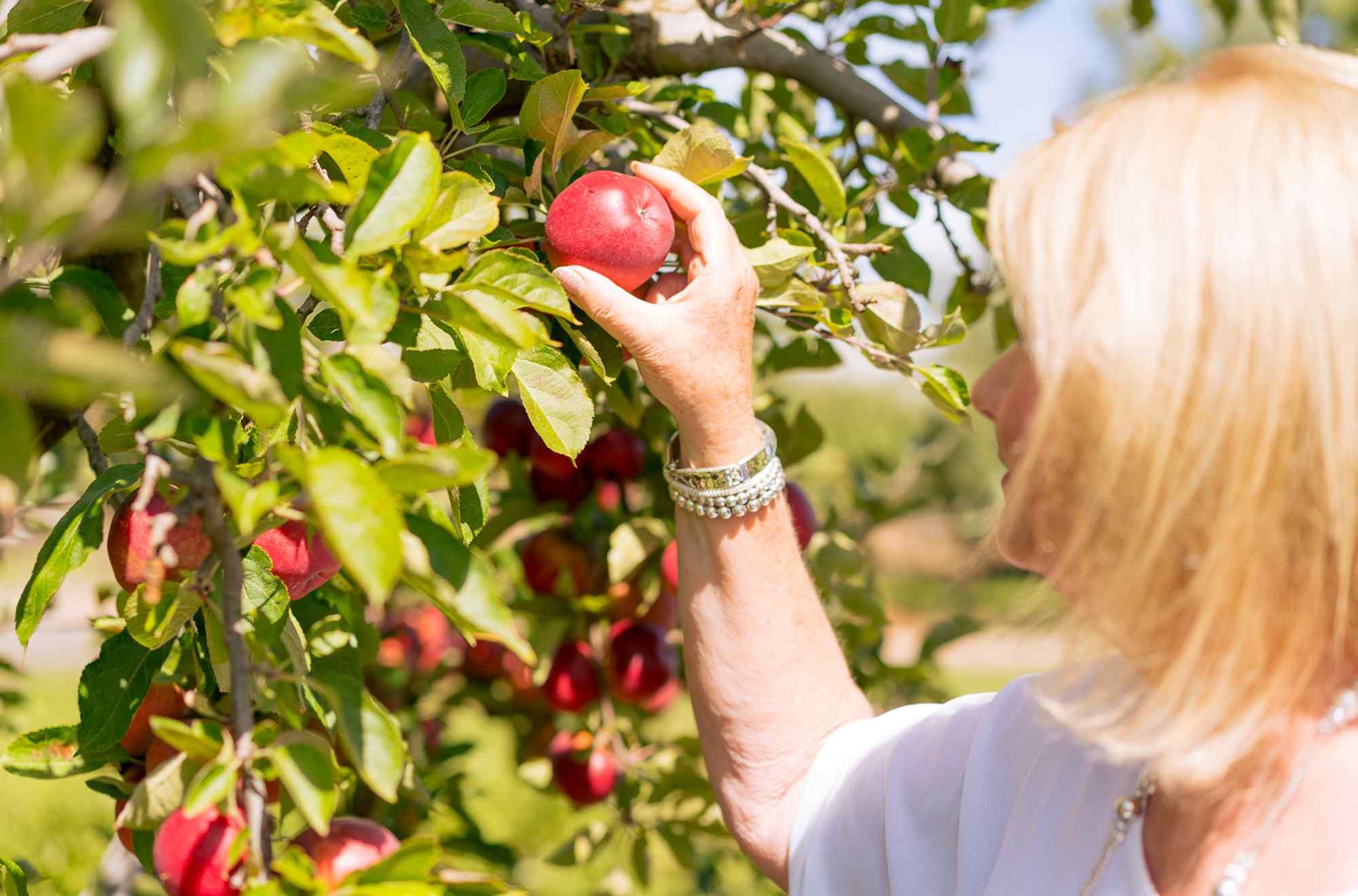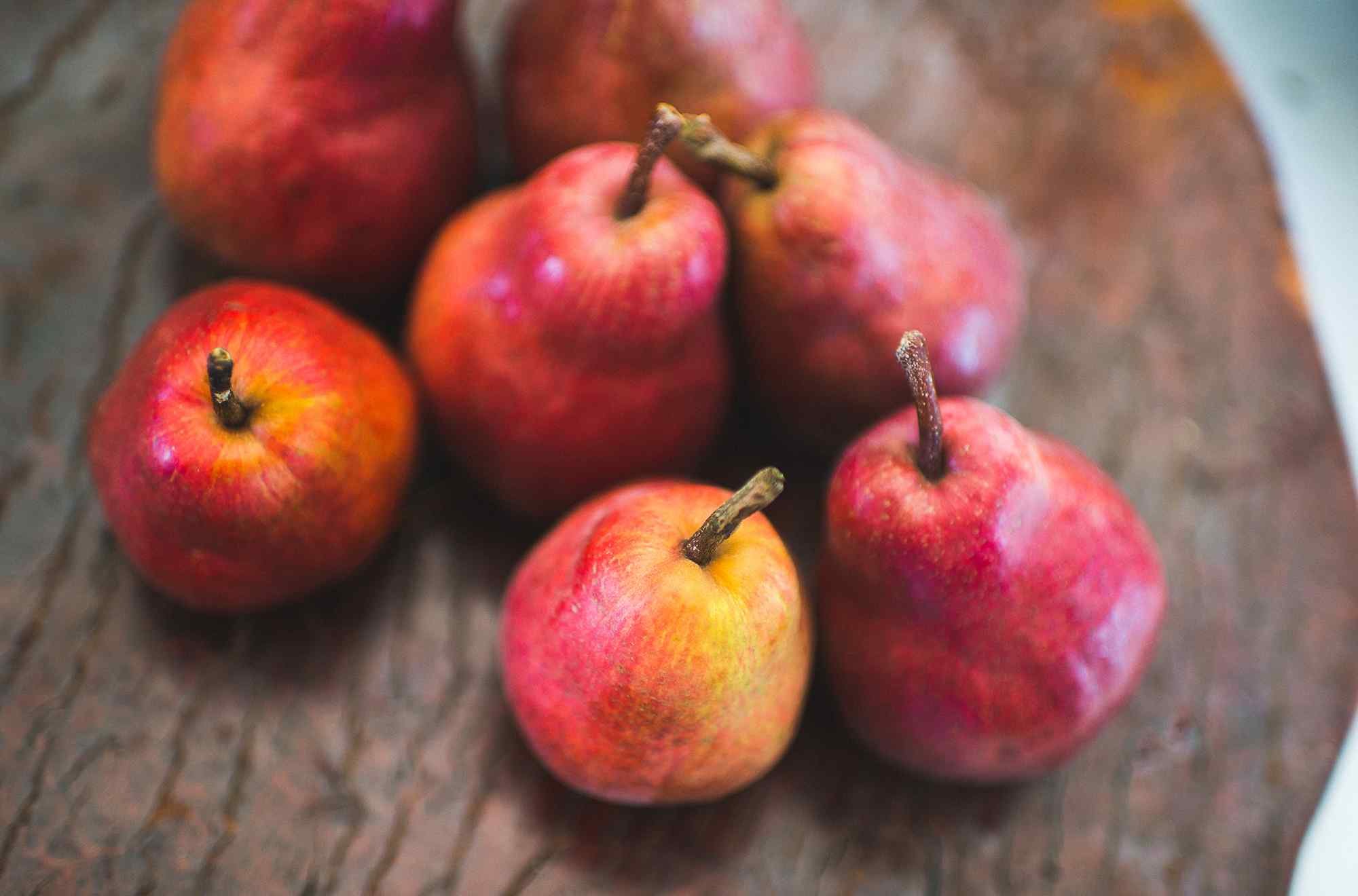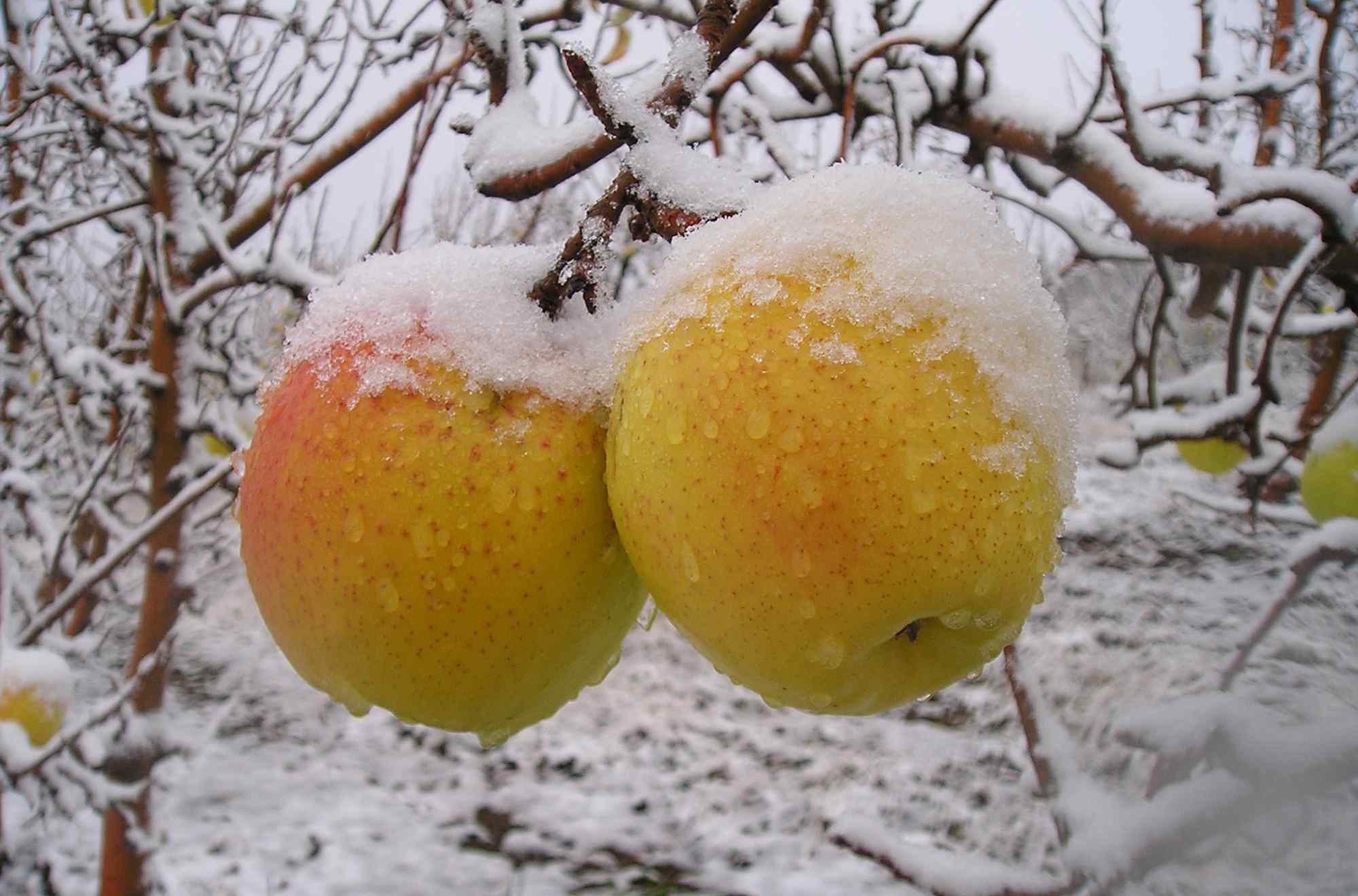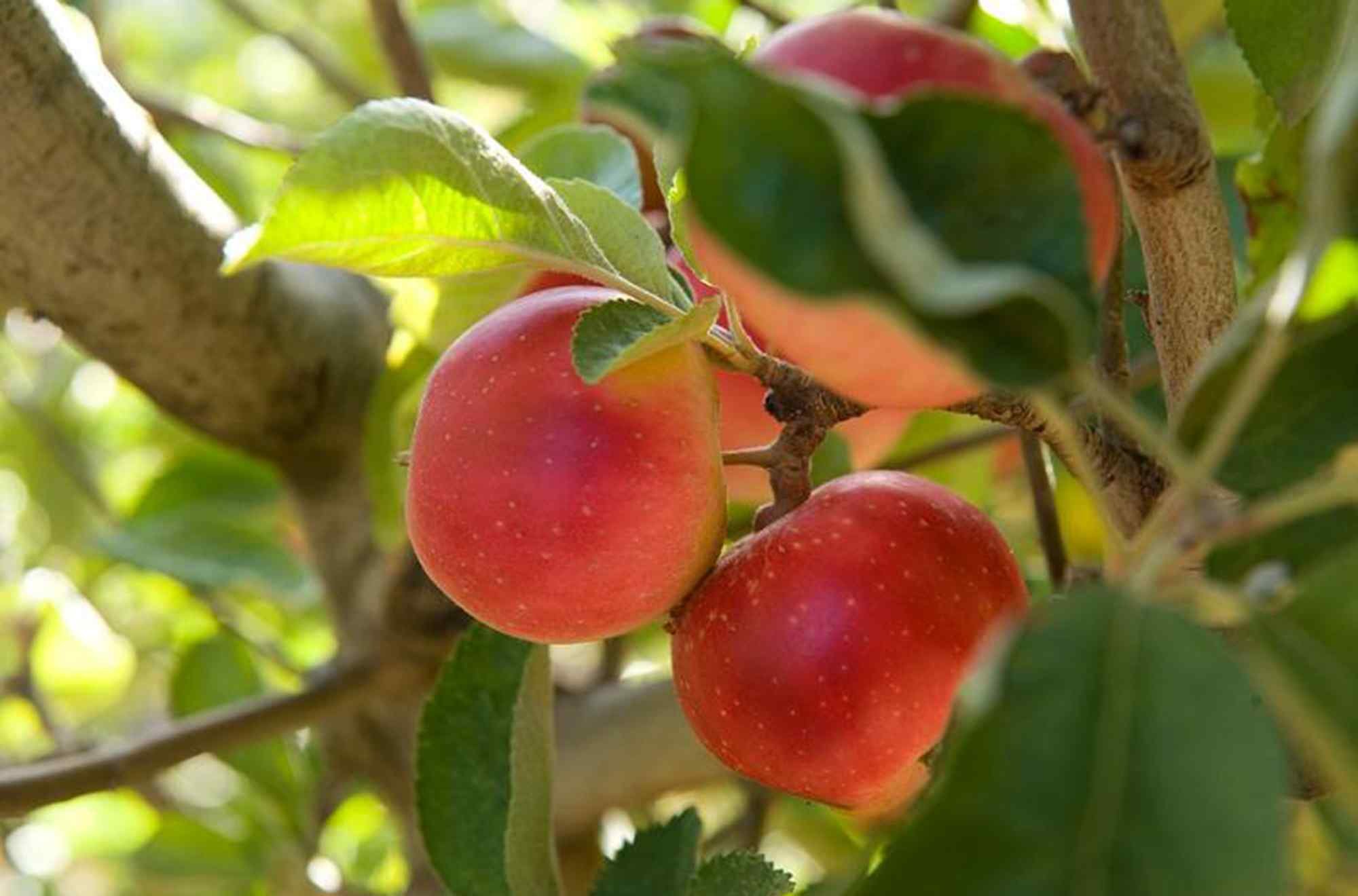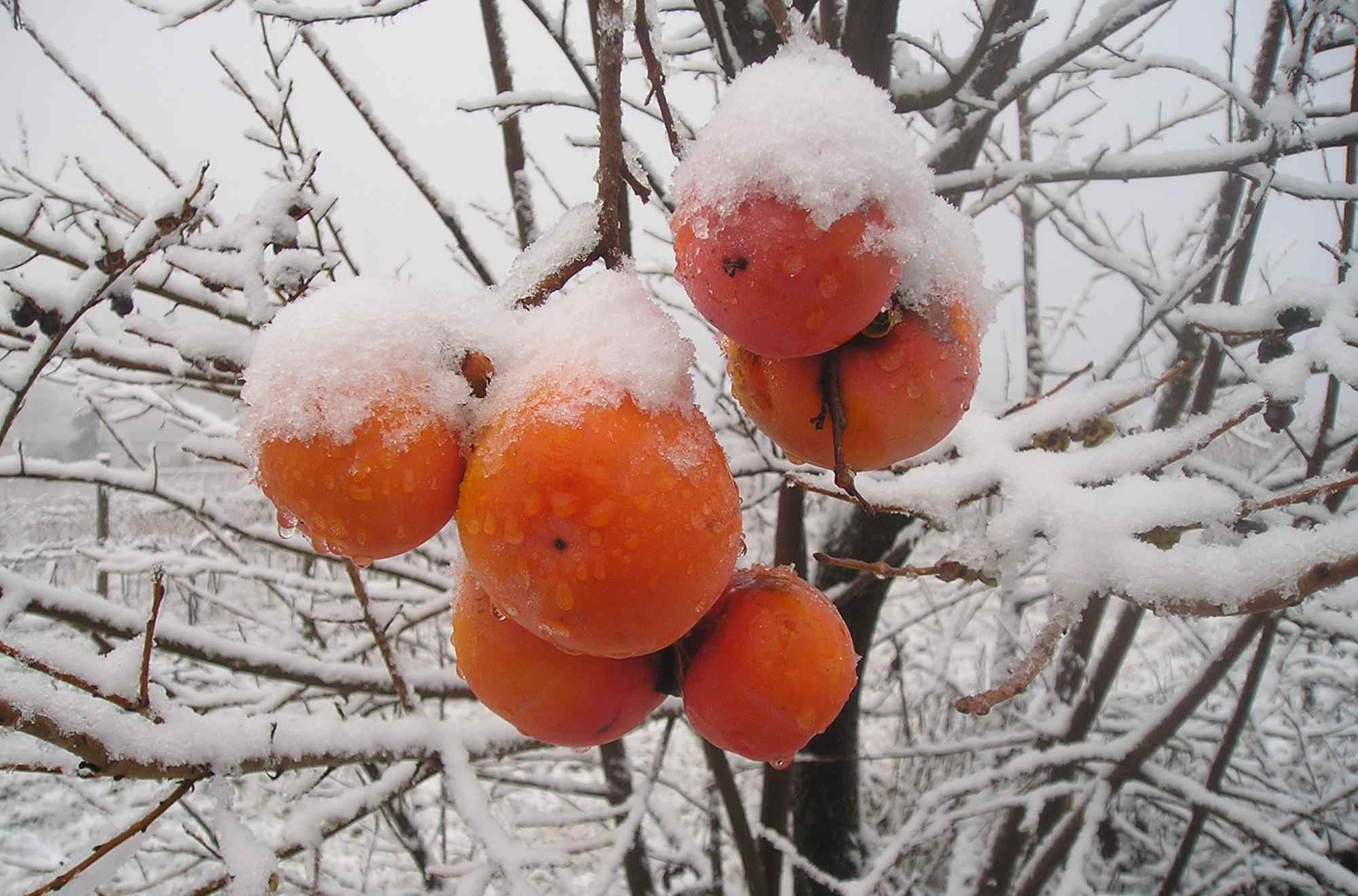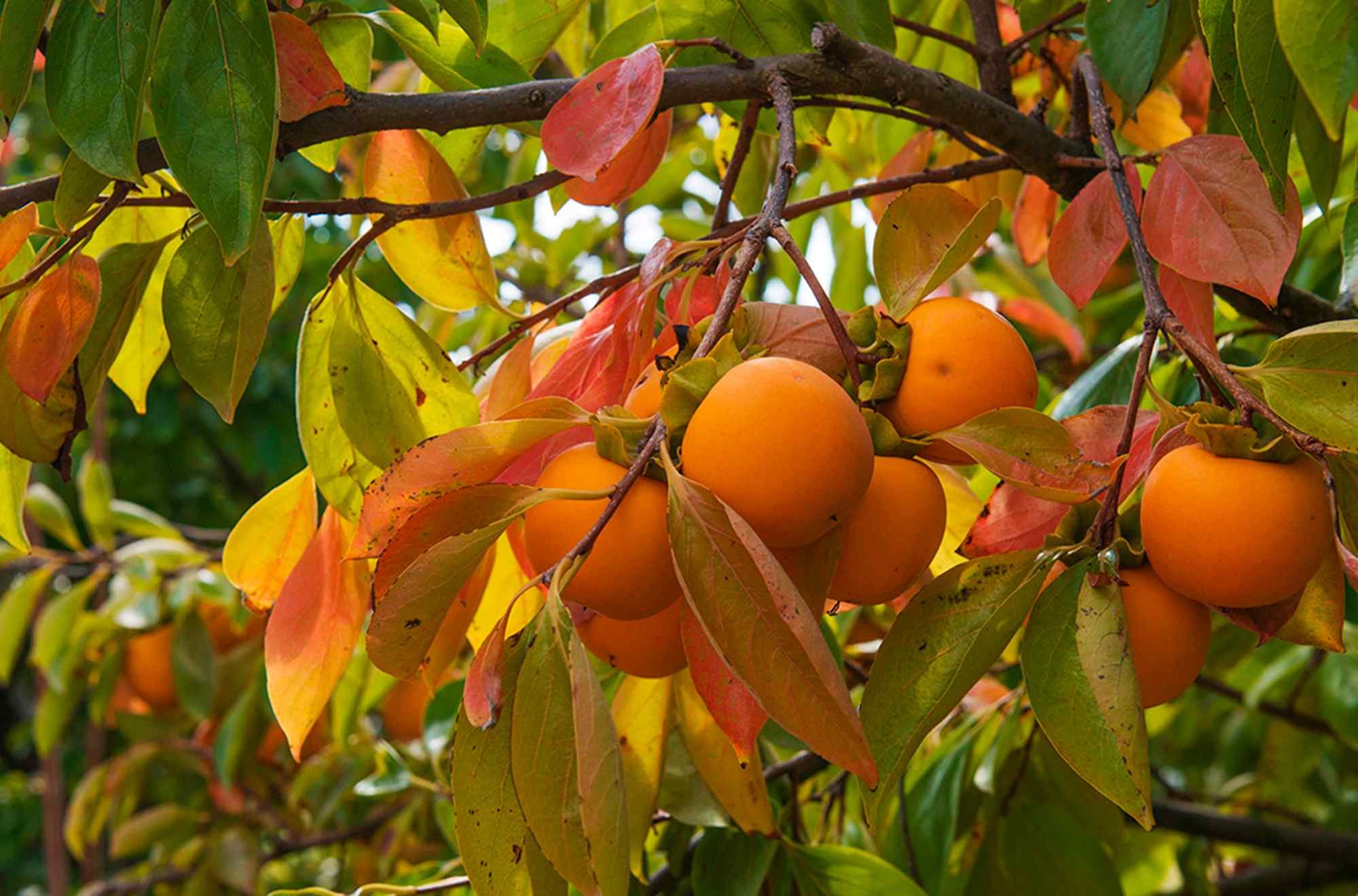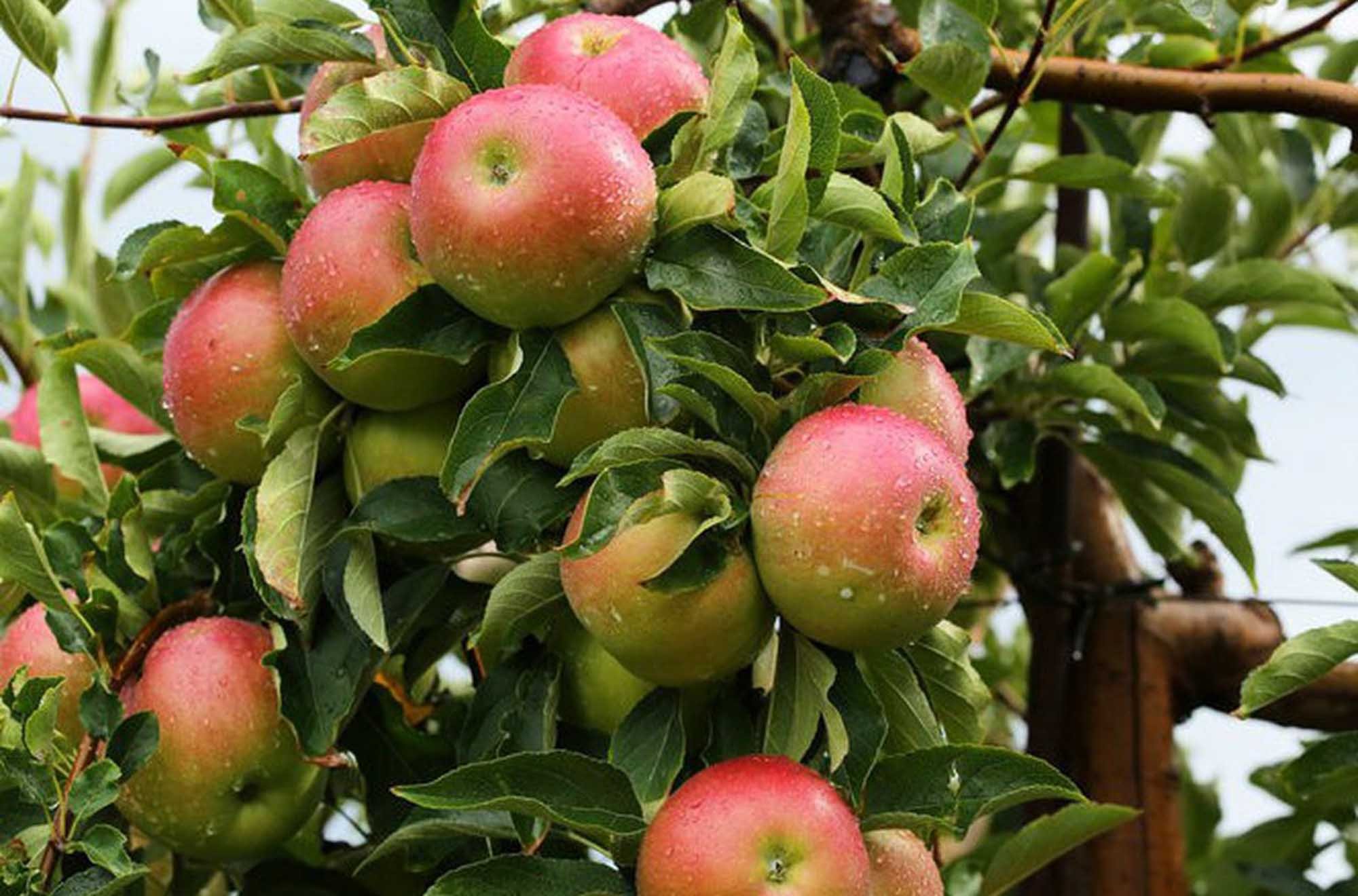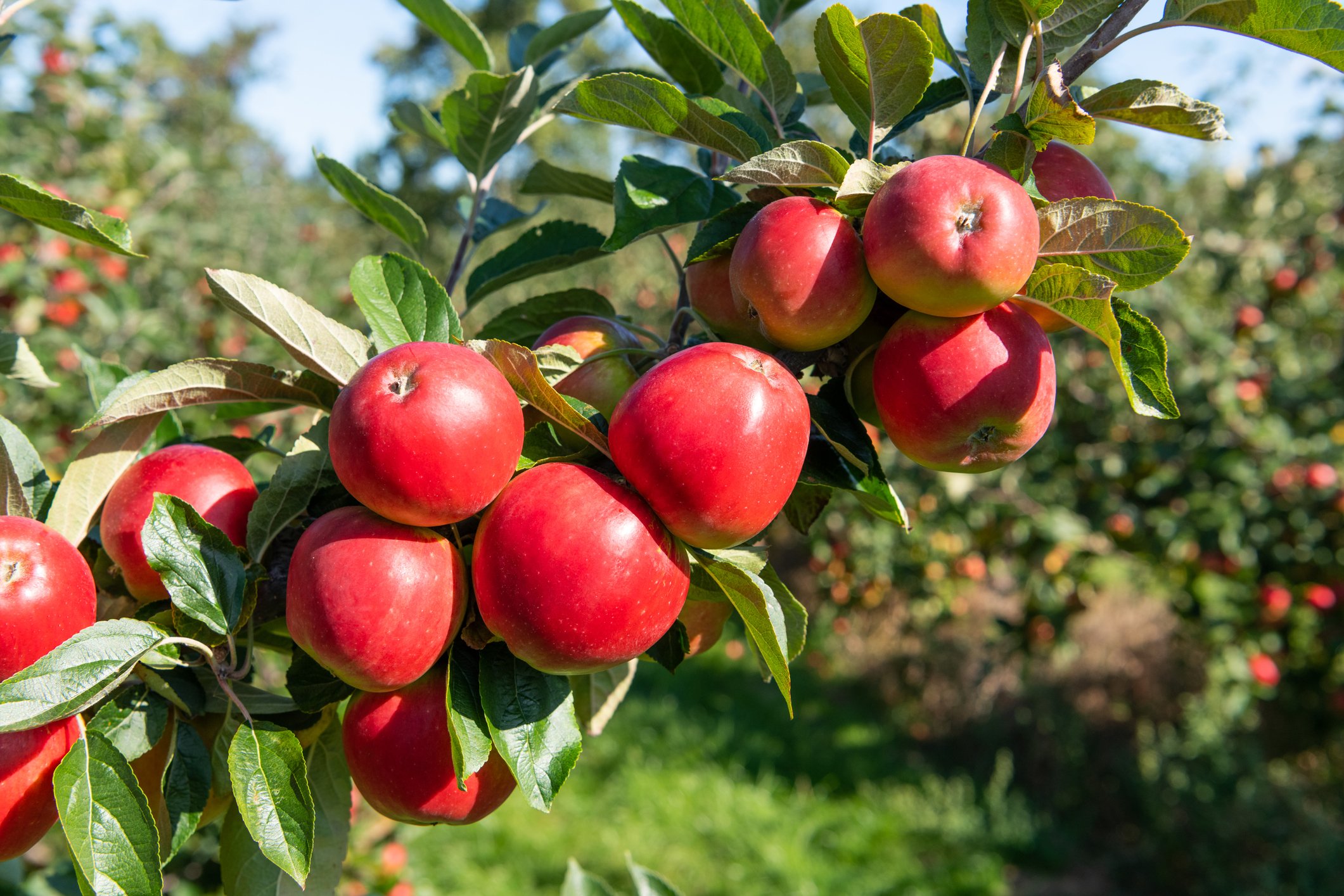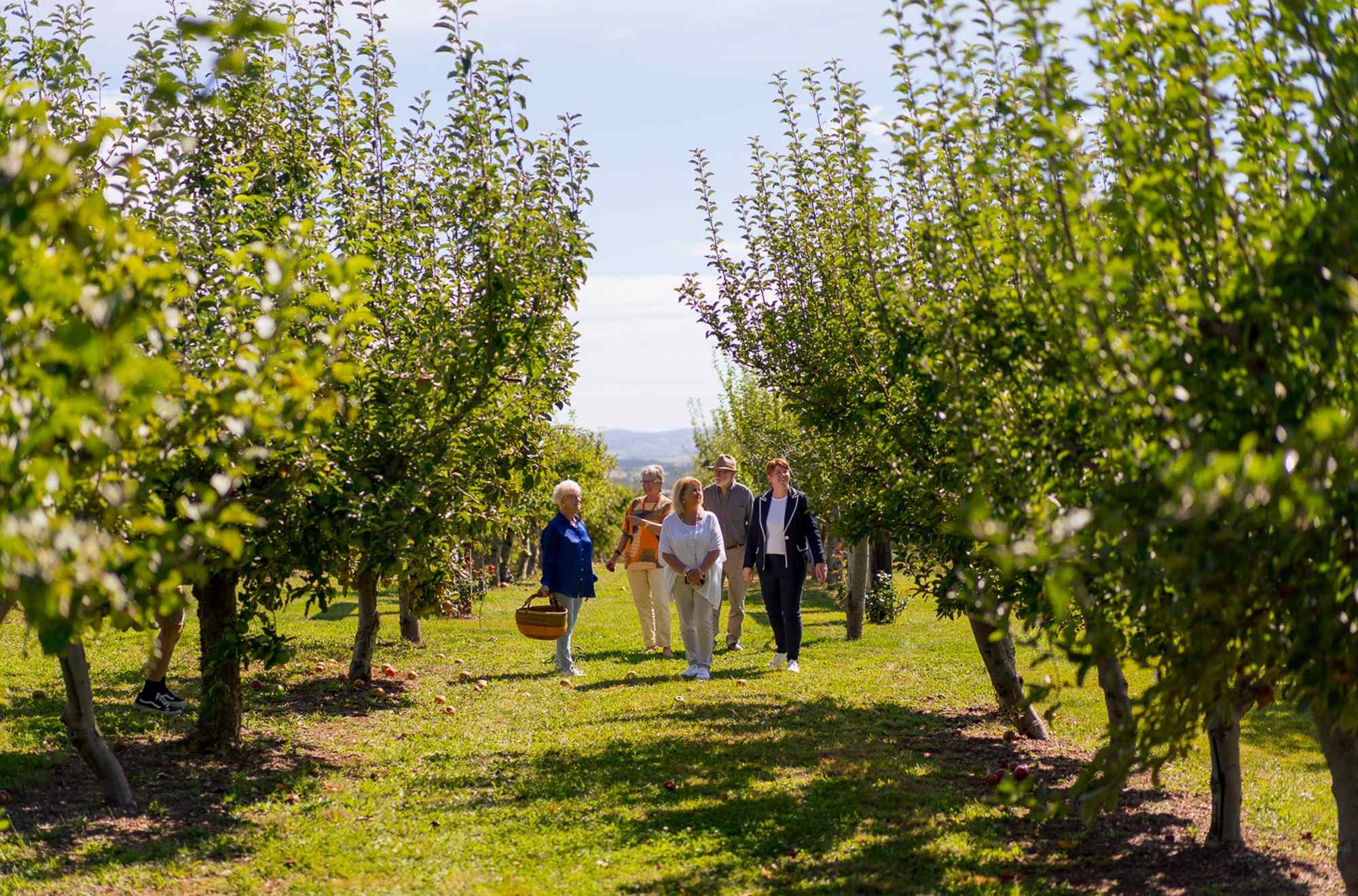
Our unique collection
Borrodell
Orchard
We grow many different fruit and produce – apples, cherries, plums, quinces, persimmons, almonds and Black Perigord Truffles, all using sustainable practises and no pesticides.
heritage apples
There is a unique collection of over 200 different varieties of heritage apples – dessert (eating), culinary (cooking) and cider apples, and over 230 varieties of heritage plums. Grown in another era, when seasonality and flavours drove the market, they all have attributes that makes them special. The apples from the past were found as chance seedlings or propagated by the gardeners of wealthy nobility who usually named the fruit after obvious characteristics or the King/Queen of the day or other nobility. Most hark back to an era when the apple was a most prestigious fruit.
Mature apple tree wood were once known as the “wood of kings” on the basis that you would need to be rich as a king to afford to cut down and burn an apple tree.
Two hundred years ago intense competition existed between the Americas and the motherland. Dr. Hogg, Scottish apple breeder edited a pomology of Horticulture to ensure the known apples of England were properly recorded. His book British Pomology, published in 1851, is amongst the most treasured and collectable books of all time. We grow a Dr. Hogg apple – it’s as big as soccer ball!
The only sin many of these apples committed awas not keep for long periods in cool storage. Borrodell’s apples and all fruit are truly “tree ripened”, enhancing their flavours,
The apple seasons lasts for about six months – there is generally an apple or plum on a tree from January through to June. The orchard fruit is available for a ‘pick-your-own’ when available. Contact us to find out more.
CIDER APPLES & PEARS
Cider is the fermented juice of apples. Perry, also known as pear cider, is the fermented juice of pears, Borrodell has been growing cider apples and pears since the early 1980’s. The varieties used in our cider include true cider apples, not widely grown in Australia; Improved Foxwhelp. Kingston Black and Somerset Red Streak. Our Perry uses: Stinking Bishop, Green Horse. The Gin Pear and Yellow Huffcap.
HISTORY
Cider is possibly the oldest of all alcoholic drinks. Enthusiasm for the cider apple itself goes back at least to Roman times. By the 11th Century, there were known orchards in the Contentin region of France, around Caen and in the Pays d’Auge. In 1066, the Normans brought their more advanced cider making methods to England along with their cider apple varieties. Specific references to cider apple varieties began to emerge in the 13th and 14th Centuries and of these, two are known to have survived and can be found growing and bearing fruit today – Cap of Liberty and Genet Moyle. The Cap of Liberty apple will make, without blending with any other variety of cider fruit, a pleasant acidity, midly bitter cider. The kingston Black apple has a similar reputation in England.
Perry has been made traditionally in England and Wales for more than 500 years. Formerly wild pears, originating in the Forest of Dean in the Wye Valley, these pears were propagated and domesticated by local farmers in the early 1300’s. Although inedible, it was discovered their pressed juice could be used as an alcoholic beverage, a traidtion originating in the Heresfordshire, Gloustershire and Worcestershire in the UK. Perry pears were introduced into Australia during the Gold Rush period of the 1850’s in Harcourt, Victoria.
DESCRIPTION
Besides the obvious differences of taste and flavour, the cider apple can be set apart from eating and cooking apples because its flesh has a fibrous texture which makes it easier to extract the juice. With high tannins, the juice received body and colour and a high sugar level but low acidity.
*Cider apple varieties are divided into four categories according tot he relative proportion of acidity and tannin;

SWEET
Sweet varieties are blandest of the four categories, being low in both components. They are useful to blend with ciders from the more strongly flavoured varieties, which, by themselves, would be too extreme in taste and aroma to be palatable. Typical examples of sweet apples are Sweet Coppin, in use to a small extent, and Court Royal which was used extensively at one time but rarely used nowadays.
BITTERSWEET
Bittersweet apples impart the characteristic flavour of English cider; as the name implies they are low in acid and high in tannin. The latter is responsible for two sensations on the palate – astringency and bitterness. In the bittersweet apple, there is a whole range of combinations of these two characteristics, varying from little astringency coupled with intense bitterness to very marked astringency coupled with mild bitterness. Typical bittersweets are Dabinett, Yarlington Mill and Tremlett’s Bitter.
SHARP
Sharp varieties, so called because the predominant characteristic is that of acidity, are encountered less frequently today, possibly because culinary fruit, which has a similar flavour balance, can be substituted for this class. There are, however, recognised full sharp cider varieties, two of which are Crimson King and Brown’s Apple.
BITTERSHARP
Bitter-sharp is the fourth class of cider apple. These are fairly high in acid and tannin, although the latter component does not show the wide range of flavours exhibited by the bittersweet. Stoke Red is a good example.

